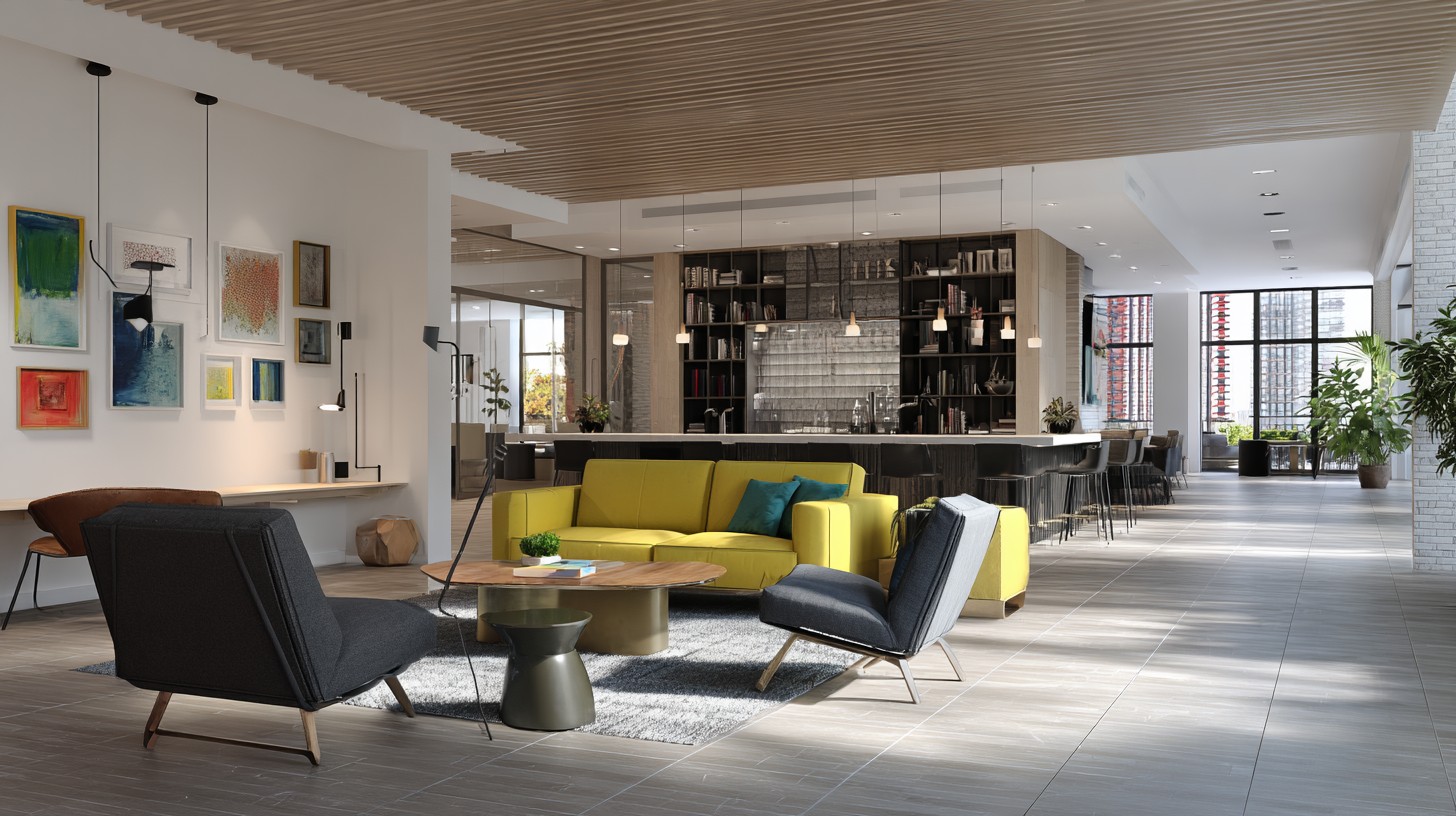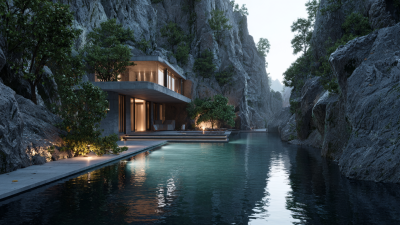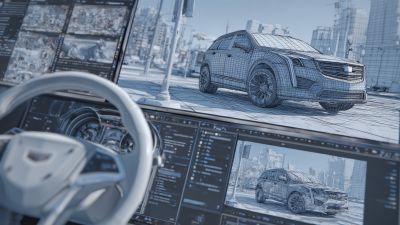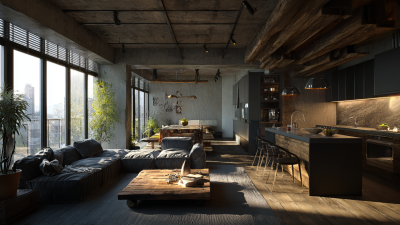How to Leverage Design Rendering for Stunning Visual Presentations
In today's competitive landscape, captivating visual presentations are essential for effectively communicating ideas and engaging audiences. One of the most powerful techniques to achieve this is through the use of Design Rendering. This method allows creators to transform abstract concepts into vibrant, realistic visuals that not only capture attention but also enhance understanding. By leveraging Design Rendering, designers and presenters can showcase their visions with clarity and impact, making complex information more accessible to their audience.

Whether you're an architect, product designer, or marketer, mastering the art of Design Rendering can significantly elevate the quality of your presentations, ensuring that your messages resonate and leave a lasting impression. In this discussion, we will explore practical strategies to harness the power of Design Rendering to create stunning visual presentations that stand out.
Understanding the Importance of Design Renderings in Visual Presentations
Design renderings play a crucial role in crafting visually appealing presentations that effectively communicate ideas and concepts. By transforming abstract thoughts into tangible visuals, they allow audiences to grasp complex information quickly and efficiently. High-quality renderings provide clarity and can evoke emotional responses, making them an essential tool in gaining stakeholder buy-in and enhancing overall engagement.

Tips for creating impactful design renderings include focusing on detail and realism, which can significantly enhance the viewer's connection to the presented material. Utilizing software tools that specialize in 3D modeling can help bring your ideas to life more accurately. Additionally, incorporating a consistent color palette and design elements ensures your visuals maintain a cohesive look, strengthening the overall message of your presentation.
Moreover, consider the composition of your renderings. Balancing visual elements and maintaining a clear focal point can guide viewers through the information seamlessly. Experimenting with different perspectives can also add depth and intrigue to your presentations, encouraging your audience to engage more actively with the content.
Choosing the Right Tools and Software for Effective Design Rendering
When it comes to effective design rendering, selecting the appropriate tools and software is crucial for achieving stunning visual presentations. Various software options cater to different design needs, from 3D modeling to digital painting and architectural visualization.
 For instance, programs like Adobe Dimension and SketchUp provide intuitive interfaces that allow designers to create realistic models with ease. These tools not only enhance the creative process but also ensure that the final output resonates with the intended audience.
For instance, programs like Adobe Dimension and SketchUp provide intuitive interfaces that allow designers to create realistic models with ease. These tools not only enhance the creative process but also ensure that the final output resonates with the intended audience.
In addition, utilizing software such as Blender or Autodesk Maya can significantly elevate the quality of visual presentations. These platforms offer advanced features like ray tracing and rendering engines that produce photorealistic images. Moreover, cloud-based tools like Figma and Canva enable seamless collaboration, allowing multiple team members to contribute ideas efficiently. By leveraging the right combination of tools and software, designers can transform their concepts into breathtaking visuals that capture attention and convey messages effectively.
Step-by-Step Guide to Creating Eye-Catching Renderings
Creating stunning visual presentations can be drastically enhanced through effective design rendering techniques. With advancements in AI-generated imagery, such as photorealistic renderings and artistic designs, presenters can now captivate their audience more than ever before. According to recent industry reports, visual content is processed 60,000 times faster by the human brain compared to text, making it imperative to utilize striking renderings in presentations.
Tips: To begin your rendering journey, start by choosing the right tools. AI software can help automate the rendering process and increase efficiency. Experiment with various styles and elements to make your designs unique and appealing. Incorporating data visualizations can also enhance comprehension and retention of information.
Another effective approach is to leverage platforms that streamline design and creation. Using user-friendly applications, you can easily create templates for presentations that not only look professional but are also engaging. Additionally, collaborating with other designers or utilizing community feedback can provide fresh insights and improve your work quality. Embrace the evolving landscape of design technology to enhance your presentations significantly.
Incorporating Branding Elements into Your Renderings for Cohesion
Incorporating branding elements into your design renderings is crucial for creating cohesive and impactful visual presentations. According to a study by the Design Management Institute, companies that prioritize design outperform their competitors by 219% on the S&P Index, highlighting the importance of visually appealing and brand-aligned representations. By seamlessly integrating logos, color palettes, and typography into renderings, brands can enhance recognition and foster emotional connections with their audience. Visuals that reflect brand identity not only capture attention but also reinforce the brand's mission and values, leading to stronger customer loyalty.
Moreover, consistency in branding across various renderings can significantly improve perceived value and professionalism. Research from Adobe indicates that brands with consistent presentation across all platforms generate 3 to 4 times more brand visibility and engagement than those that do not. When design renderings feature cohesive brand elements, whether in architecture, product design, or marketing materials, they become more than just visual aids; they transform into powerful storytelling tools that resonate deeply with viewers and stakeholders alike. This thoughtful incorporation of branding can ultimately elevate the narrative behind your presentations, making them both stunning and memorable.
Visual Presentation of Design Rendering Techniques
Best Practices for Presenting Your Renderings to Captivate Your Audience
Creating stunning visual presentations through design rendering involves strategic practices that engage your audience effectively. According to a recent report by the Design Management Institute, companies that prioritize design see a 228% increase in their stock market performance over ten years, demonstrating the power of visual appeal in business success. When presenting your renderings, begin by focusing on clarity. Use high-resolution images and ensure that your color palettes are harmonious and on-brand. This clarity not only enhances aesthetic appeal but also aids in conveying information more effectively.
Additionally, storytelling plays a crucial role in captivating your audience. The Nielsen Norman Group found that users spend an average of 10-20 seconds on a visual presentation, making it essential to capture their attention quickly. Incorporating narratives that illustrate the rendering’s purpose or context can create an emotional connection, making your presentation more memorable. Utilize comparative visuals or before-and-after images to highlight improvements, helping your audience visualize the impact of your designs. By blending clarity with storytelling, you can elevate the effectiveness of your presentations and leave a lasting impression.
Related Posts
-

How to Optimize Your 3D Rendering Process for Maximum Efficiency
-

Unlocking the Power of Best AI 3D Rendering: What Makes It Stand Out?
-

Stunning Examples of Best Digital Renderings You Need to See
-

Exploring the 2025 Tech Trends: Unleashing the Advantages of Best CGI Rendering for Global Buyers
-

10 Essential Tips to Elevate Your 3D Rendering Skills in the Digital Age
-

How to Enhance Your Designs with Stunning Sketch Up Renders


